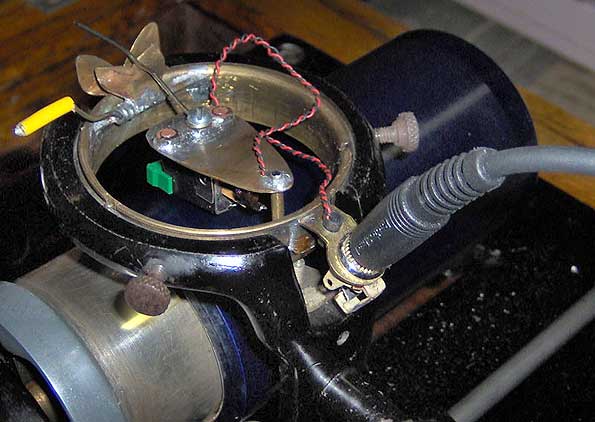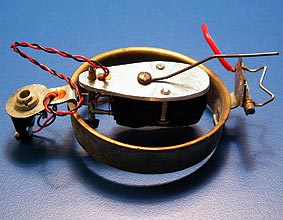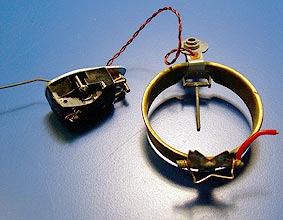
Version: Jan. 9, 2007
 |
|
Version: Jan. 9, 2007 |

Picture courtesy of Wyatt Markus |

|
Here is how this reproducer is presented on the label on the film can it comes in. Several of these reproducers were made in the early 1980's by the Rev. John A. Petty, and on this page I present pictures of three of them, most easily identifiable by the colour of the handle of the lifting mechanism lever (red, white or yellow). The cartridge mentioned on the can label, the Shure M3D, is a stereo cartridge from the 1960's, with a recommended tracking force of 3 to 6 grammes. Of the reproducers presented here, only the red one is equipped with this pickup. The other two seem to have later Shure models. The reproducer fits in the ring of Edison phonographs. For all three, the basic construction is the same, but they are by no means identical. Here are a few differences:
From all these construction details I find it hard to see a line of development and estimate the chronology of these three devices. Users tend to find the reproducer straightforward and easy to use on an Edison phonograph, despite its fragile appearance. With a cylinder in good condition it renders an steady and pleasant sound. I was wondering why it has a lift mechanism at all, when that already comes included in the Edison, and Robert Barnett explained to me why: "This is necessary if you install the reproducer on a later Amberola machine, such as the model 30, 50 and 75, and maybe others too. You'd need the lift arm to have the stylus clear the cylinder before and after playing. On retrofitted Homes, Standards and Firesides this lift arm isn't needed, since the entire reproducer carriage lifts up to clear the stylus." Christer Hamp, 2007 |
 Photo © Rob Lomas, 2000
Photo © Rob Lomas, 2000
|
 Photo © Rob Lomas, 2000
Photo © Rob Lomas, 2000
|
 Photo © Robert Barnett, 2007
Photo © Robert Barnett, 2007
|
 Photo © Robert Barnett, 2007
Photo © Robert Barnett, 2007
|
|
|
|
|
|
|

| Any comments on this reproducer, please write: | ||
